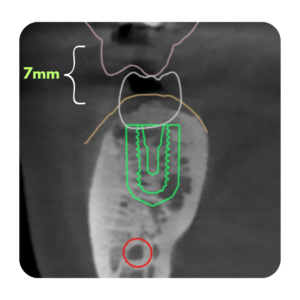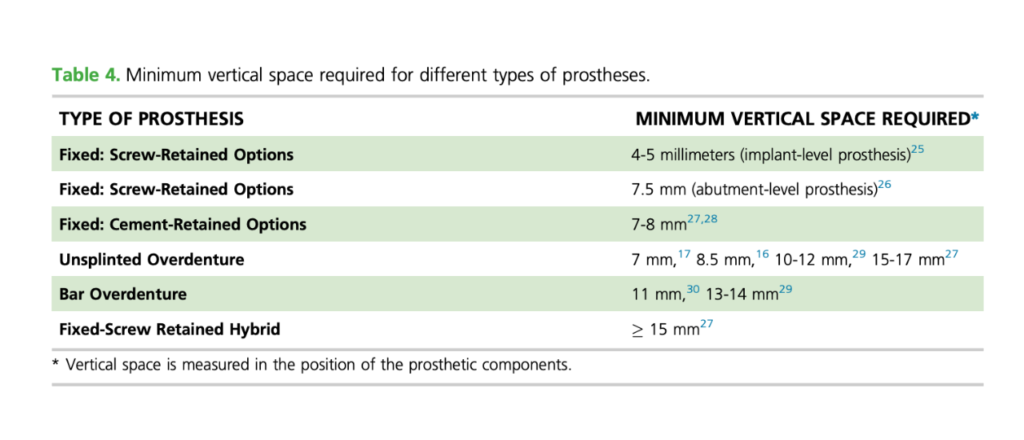
So Somebody texted me this image and they wanted to know if there is enough room to restore this future implant site.
What do you think?
Let’s do a little digging.
It seems that Carl Misch may have originally coined the phrase Crown Height Space (CHS). In this Consensus Panel Report by Misch et al, the group originally suggested the ideal CHS should be 8-12mm.
While their suggestions are helpful, I think a revision is in order. First of all, on the right is the image that was was presented. And we can see here that they assumed implants placed in a suprarestal position which is largely not being performed these days.


According to Misch, The CHS for implant dentistry is measured from the crest of the bone to the plane of occlusion in the posterior region and the incisal edge in the anterior region.

In that small piece of real estate, you have to fit a lot of stuff, including the tibase or abutment and the restorative material for the crown itself.
And in general, the more space you give your lab, the easier it will be for them to make it look pretty.
It’s true, a few millimeters can be the difference between a beauty and something that looks like squished chewing gum. Let’s take a look at this beauty for example. The red arrow indicates the implant crown:

But, now look the problem that magically appears when when the patient bites down:

Do you feel it? That’s the feeling of an impending lawsuit because the doctor didn’t plan the case properly. And you know who that doctor was?….Me.
In this case, there was no restorative room because there was no posterior stop. Luckily, I was able to get him some posterior teeth and open his bite up that way to make this implant restorable (after a lot of work!)
Safe to say that I did not have the 8-12mm that Misch suggested, I didn’t have ANY restorative room!
Times have indeed changed however, so I think a more updated reference is in order. I came across this table from an article by Carpentieri et al published in the Journal of the American Dental Association that outlines some good rules of thumb:

Also, for what it’s worth, this was confirmed by my buddy Chris at Arklign Dental Lab.
Now, I will say that this is a bare-minimum type of scenario. You DON’T want to find yourself in a bare minimum scenario. So, do yourself a favor and plan ahead.
Before jumping in to place an implant in a tight space, look at all of the options you have to gain space. Before implant placement, can you adjust the opposing tooth? Can you do some alveoplasty prior to placement? Can you place your implant a little bit subcrestal? Is this a case that needs some ortho or full mouth rehabilitation?
Small steps taken up front, can save you a big headache later.
Ivan
PS: If you’re in a reaaallly tight spot (pun intended) you might consider a full metal monolithic restoration. Back in the day they used UCLA abutments for this so the entire restoration is one piece instead of a tibase cemented to an extra piece. And then you can have porcelain stacked on the facial to make it look pretty. Hope that helps!
This 60 second video doesn’t do it justice, but I’ll drop the link to the IG reel anyway!




Responses